30+ Sample Vacation Trackers
-
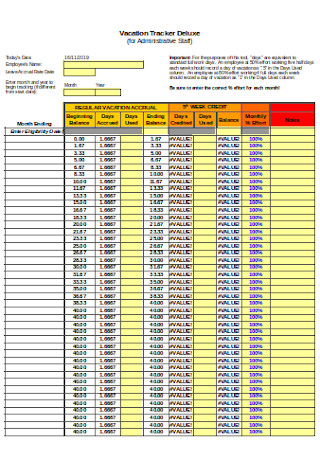
Sample Vacation Tracker Template
download now -

Leave Tracking Form
download now -
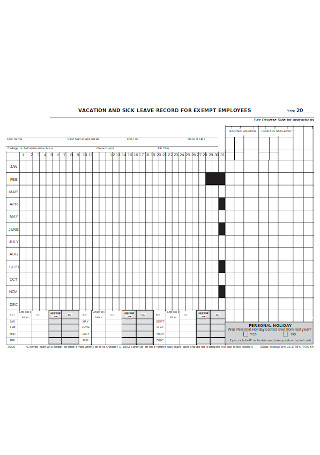
Vacation and Sick Leave Record
download now -
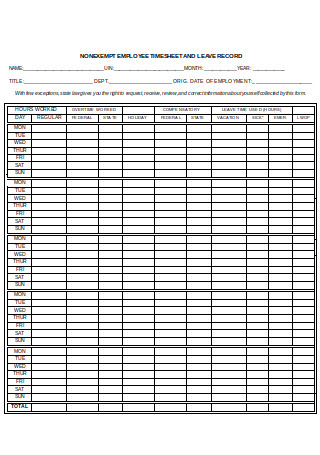
Employee Time Sheet and Leave Record
download now -
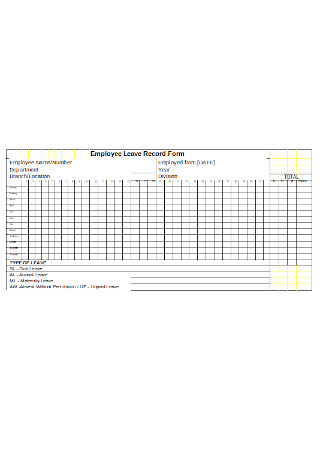
Employee Leave Record Form
download now -
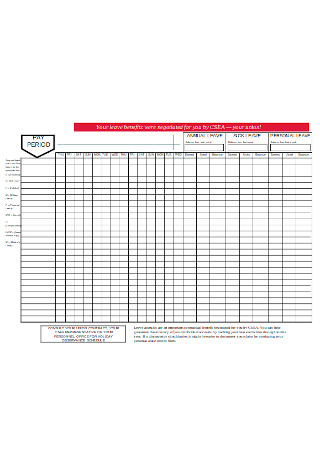
Employee Leave Record
download now -
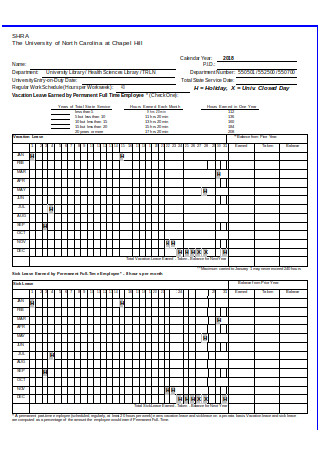
Vacation Leave Tracker
download now -
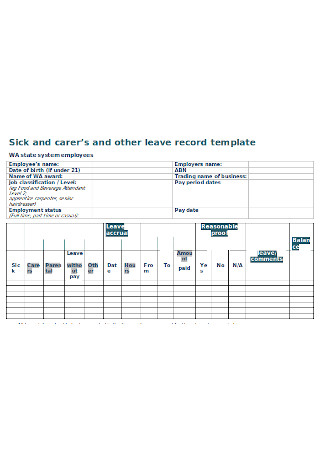
Leave Record Template
download now -
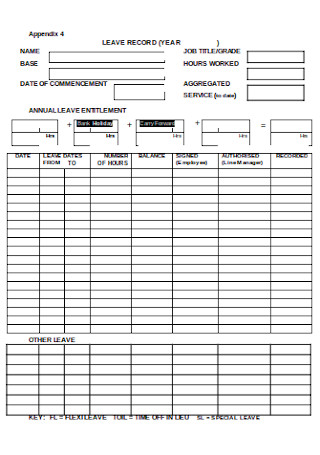
Annual Leave Record Tracker
download now -
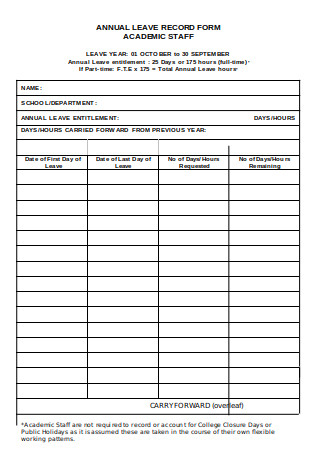
Annual Leave Record Form
download now -
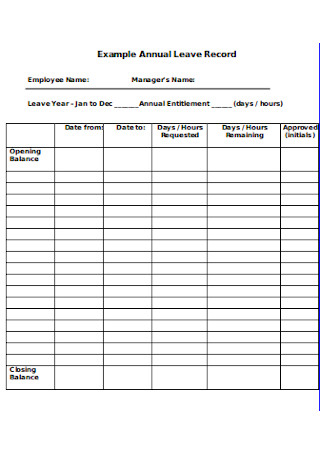
Example of Annual Leave Record
download now -
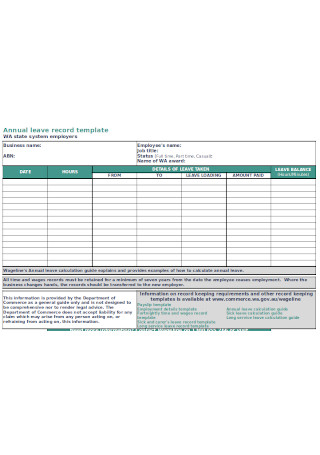
Annual Leave Record Template
download now -
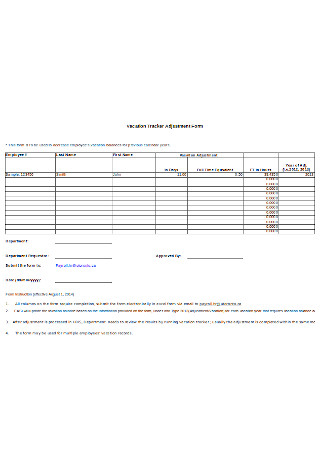
Vacation Tracker Adjustment Form
download now -
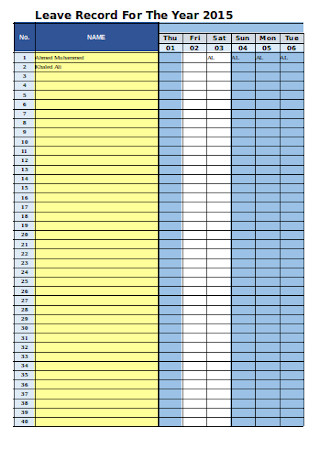
Simple Vacation Tracker Template
download now -
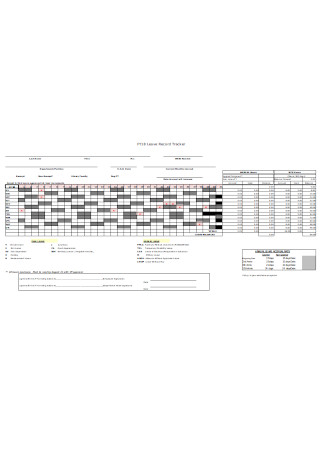
Leave Record Tracker
download now -
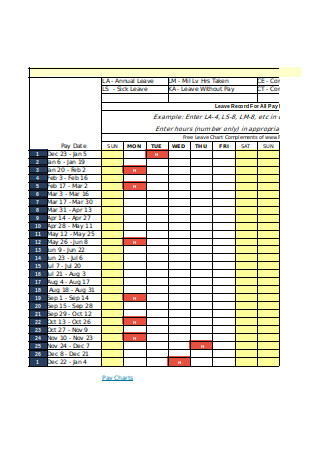
Employee’s Leave Record Tracker
download now -
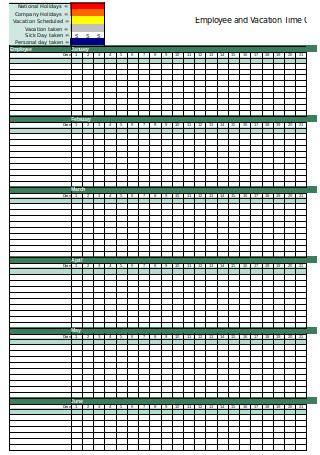
Employee and Vacation Time Off Tracker
download now -
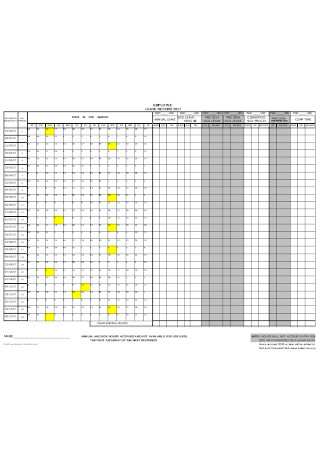
Employee Leave Record Format
download now -
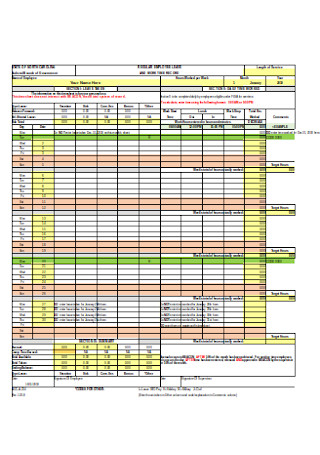
Employee Leave and Work Time Record
download now -
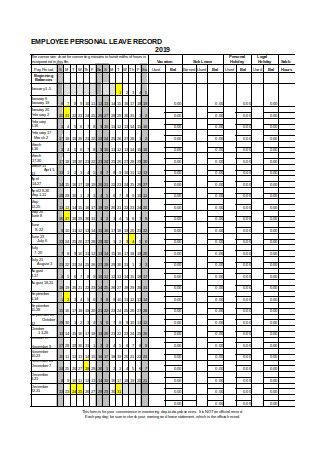
Employee Personal Leave Record
download now -
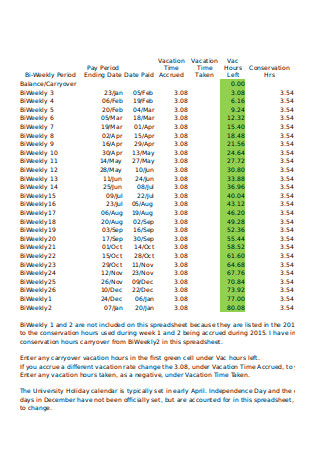
Sample Vacation Tracker
download now -
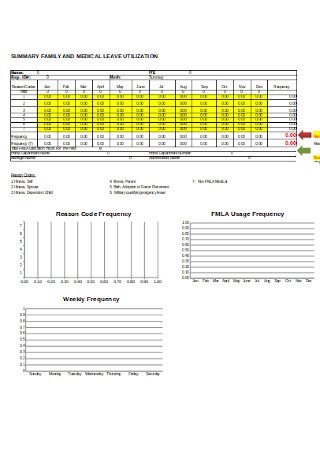
Employee Vacation Tracker Sheet
download now -
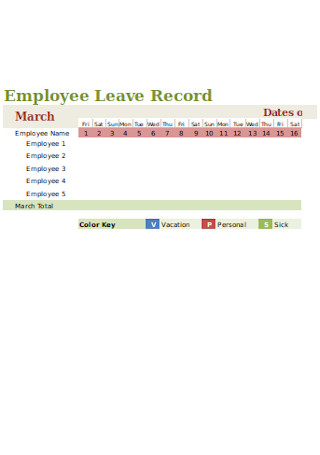
Vacation And Sick Time Tracking
download now -

Simple Leave Record Form
download now -

Sample Annual Leave Spreadsheet
download now -
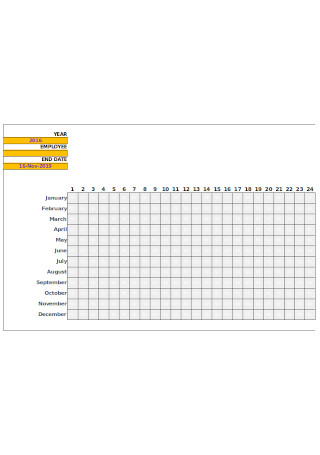
Employee Leave Record Sample
download now -
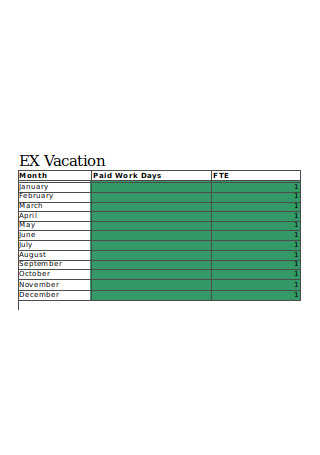
Annual Vacation Tracker Template
download now -
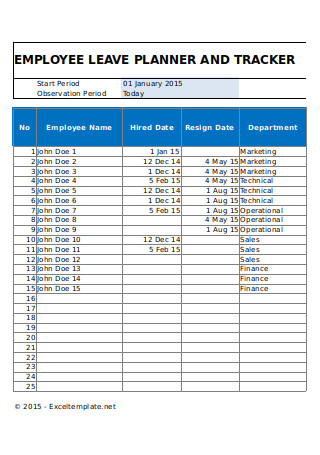
Employee Leave Planner and Tracker
download now -
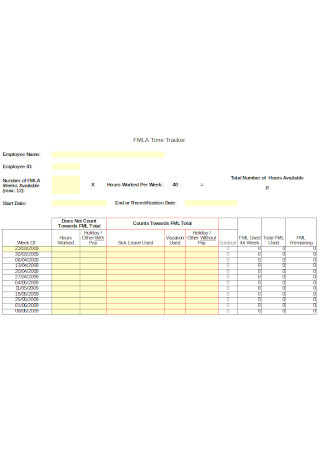
Employee Time Tracker
download now -
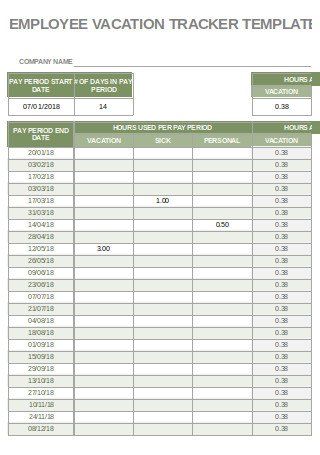
Employee Vacation Tracker Template
download now -
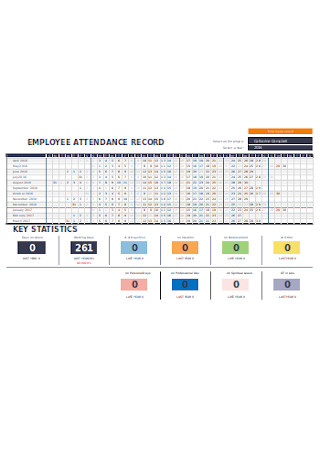
Employee Attendance Record
download now
FREE Vacation Tracker s to Download
30+ Sample Vacation Trackers
What Is a Vacation Tracker?
Standard Content of an Excellent Vacation Tracker
Purpose of Using a Vacation Tracker
8 Steps for Creating the Best Vacation Tracker for Your Business
Advantages of Having a Well-Made Vacation Tracker
Dos and Don’ts for Developing an Effective Vacation Tracker
What Is a Vacation Tracker?
One of your possible human resource management strategies is the development of a vacation tracker for the management of data related to vacation leave usage and updates. A vacation tracker is a document that is used by businesses for employee vacation leave management. Simple vacation trackers contain information about the vacation leave credits of employees when they have used their vacation leaves and the number of vacation hours that they can still use and file a request for.
Standard Content of an Excellent Vacation Tracker
Knowing what to include in a vacation tracker is a skill that you must learn. You have to make sure that you will put all the relevant and necessary information in the document so you can maximize its usage. Even if there are different types of vacation tracker features and layouts used by a variety of businesses and organizations, there are actually standard information that should always be written in the specific document. Here are some of the details that are commonly found in a simple and basic vacation tracker:
Purpose of Using a Vacation Tracker
Aside from the benefits that a vacation tracker can provide to a company, this document can also be optimized by employees. 81% of American workers believe that planning a vacation allows them to have an easier time when it comes to using their vacation entitlements (source: ustravel). With the help of a vacation tracker, employees can easily plot their schedules based on a number of factors like vacation leave credits availability and other information that are presented in the specified document. Aside from these, here are more purposes of using a vacation tracker:
1. To Properly Set Employee Expectations
If your company will use a vacation tracker, your employees will most likely veer away from taking the opportunity to have a vacation for granted. Knowing that vacation leaves are strictly tracked can also make employees become more particular with how they will use and schedule their time for vacation. Employees need to be updated with the number of vacation leaves that they can still utilize. The number of vacation hours that they can use and the terms of vacation leave usage needs to be addressed properly so that the business can set the right expectations for their employees. Being able to do this can help the management lessen the possibility of having misunderstandings and disputes with their workforce in relation to the subject matter.
2. To Provide Information To the Human Resource Department For Payroll and Vacation Leave Management
Even if you have already included the number of vacation leaves of your employees in their employment contracts, it is still important for you to have a management system where you can look into this information in a more in-depth manner. This can be very beneficial in many circumstances or instances. As an example, once you receive an employee vacation request form, you can just check your organization’s vacation tracker to make sure that the vacation leave request contains leave credit details that are aligned with your records. Having a vacation tracker can also help you update your payroll information with ease.
3. To Ensure That the Leave Credits of Employees Are Tracked Accordingly
Using a vacation tracker can enable you to store, record, and maintain the details of your employees’ used and unused vacation leaves for purposes of documentation and referencing. Include the usage of a vacation tracker in your human resources development plan. You have to remember the the vacation leaves of your employees can impact your operations. Be keen with this matter so you can provide your employees with the time off that they have earned while ensuring that you are not overlooking the needs of your business operations.
8 Steps for Creating the Best Vacation Tracker for Your Business
Developing your own vacation tracker is actually not that hard. For first timers, it may seem to be an overwhelming or intimidating task. However, as long as you focus on the essential information that you need to put together in one document layout, it will actually come easy for you to create an effective vacation tracker. Below is a step-by-step guide that can help you easily and efficiently create the best vacation tracker that your business can optimize for a long time period.
Step 1: Download a Vacation Tracker Template or Develop a Document Layout From Scratch
You always have the option to either start from scratch or download a vacation tracker template. If this is the first time that you will be making a vacation tracker, we think that the latter option is the best one for you.
Step 2: Use the Header of Your Business or Organization
To make your vacation tracker look more formal and business-appropriate, include the header of your business in the document. Place your business header on the topmost area of the vacation tracker.
Step 3: Develop a Title That Can Make the Vacation Tracker Identifiable
Think of a title that can help you set the document apart from the other documents of the human resources. Make the title simple but make sure that you will select a font style and a font size that can enable you to see and read the document’s title easily.
Step 4: List the Necessary Information of Your Employees
Write the accurate names of all of your workforce members. Aside from this, it is essential for you to include other information to make sure that you are recording the leave credits and vacation entitlement usages of the right individual. You may write your employee’s employee number, work position, team or department involvement, and other details which can make it easier for you to record and track each person’s vacations.
Step 5: Present the Vacation Leave Credits or Entitlement of Each Employee
During the beginning of the operational year or any other dates where the vacation leave credits of each employee will be replenished, make sure to update the number of vacation hours that your employees can use. Presenting the total number of vacation leaves per employee can help you present the actual and specific changes that occurred through time depending on a person’s vacation leave usage.
Step 6: Provide the Specific Number of Vacation Leaves That Have Been Used and Those That are Still Available for Future Usage
Speaking of changes on vacation leave credits, it is of utmost importance for you to have a record of the paid vacation hours that your employee has already used. Once these have already been deducted on their leave entitlements, you can already present the remaining days or hours of vacation that an employee can still use.
Step 7: Write Down Notes and Reminders, If Necessary
If the vacation leave credits of an individual is about to expire, you can put a note in your vacation tracker so you can remind that particular employee to use his or her leave entitlements. This is a good way for you to make sure that your employees are well aware that the management supports their time-off from work especially if it can be beneficial for the employees’ overall health and work performance. Aside from this information, you can also write other important details that can enable you to highly-utilize the vacation tracker.
Step 8: Polish the Overall Visuals, Content, and Features of the Vacation Tracker
Look into all the areas of the vacation tracker. Make sure that you will correct any mistakes and update any information that needs updating. Refining the document and ensuring that it is error-free can give your organization the confidence to use the vacation tracker material that you have prepared.
Advantages of Having a Well-Made Vacation Tracker
Both the employees and employers can benefit from the usage of a vacation tracker. There are different ways on how this document can be beneficial to both stakeholders. Do you want to be aware of the ways on how you can utilize a vacation tracker for your good? Here are some of the advantages of having a vacation tracker:
Dos and Don’ts for Developing an Effective Vacation Tracker
A good employee engagement strategy is for you to allow your employees to take time off from their daily work routine once in a while. Avoid negligence on your part by ensuring that you are recording and tracking vacation leaves accurately. With this, we believe that it is already time for you to make your company’s own vacation tracker. Some of the most important guidelines that you have to keep in mind as you develop an effective vacation tracker are as follows:
Do’s
1. Do Ensure That the Format of Your Vacation Tracker Is Ideal for Updating
The effective optimization of a vacation tracker does not end on the development of the document’s layout and content. You have to make sure that your vacation tracker is highly-organized so you can update it properly whenever needed. Use a format that will not look confusing or cluttered once you already fill the document with vacation tracking-related details.
2. Do Make Your Vacation Tracker as Comprehensive and as Accurate as Possible
We recommend you to use an outline that can present all the information that needs to be written in the vacation tracker. If you can have a checklist of the necessary details that should be seen in the document, it will be easier for you to properly allocate these items on the layout that you have prepared. The completion of all vacation tracker variables and elements can surely positively impact the potential of the document’s usage.
3. Do Itemize All The Information Relevant and Aligned With Your Employees’ Vacation Leave Usage
Be particular with the details that you will include in the vacation tracker. Systematically list down all the information which you think can help you execute your vacation tracking and management efforts easily, effectively, and efficiently.
Don’ts
1. Don’t Complicate the Features, Content, and Layout of Your Vacation Tracker
Make your vacation tracker organized, simple, and understandable. Do not overwhelm the person who is tasked to use the vacation tracker as this may only result in confusion, data mismanagement, and inaccurate employee vacation tracking and documentation.
2. Don’t Be Inconsistent With Your Vacation Tracker Management Style and Strategies
As much as possible, assign specific human resource team members that will take care of the vacation tracker’s maintenance and updating. It is essential for you to be consistent with how you will use the vacation track and how you will maintain the efficiency of its features. Make sure that you already have an effective vacation tracker management style prior to the actual usage of the document.
3. Don’t Put Any Miscalculated or Unsupported Information in the Vacation Tracker
The vacation tracker that your business will use must be supported by other documents, forms, and credible sources of information. Make sure that the computation of vacation leave hours is concise and correct to the best of your knowledge. If you will be careful and mindful of the calculation and tracking of your employees’ vacation leaves, then you can promote a healthy relationship between your business and your workforce.
Even if employees are entitled to use their vacation leaves, it is imperative for businesses to still make sure that their operations will not be negatively affected by the absence of employees that are currently spending time off from work. Having a vacation tracker that is readily available can make it easier for the business to manage the information related to employee vacation documentation. Try to use any of the downloadable templates and samples above as your formatting, layout development, and content creation references.
